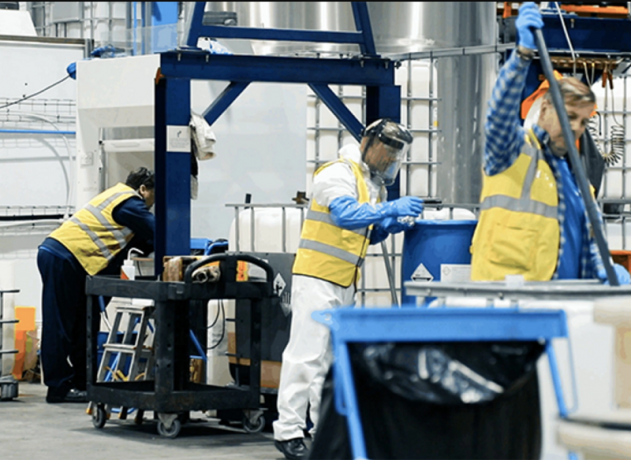In today's globalized and highly competitive markets, packaging has taken on a critical role that goes beyond simply holding a product. For food, pharmaceuticals, cosmetics, and consumer goods, packaging must ensure safety, extend shelf life, and maintain brand reputation. Quality control in packaging is the discipline that ensures these standards are consistently met.
Without robust packaging quality control, businesses risk product spoilage, recalls, legal penalties, and damage to customer trust. In a world where consumers are increasingly vigilant about safety and transparency, manufacturers can no longer treat packaging quality as an afterthought.
The Risks of Poor Packaging Quality
Packaging failures can occur for multiple reasons: inadequate seals, faulty materials, improper storage, or overlooked defects during production. The consequences of these failures vary by industry but are universally damaging:
-
Food & Beverage: Spoiled products can lead to foodborne illnesses and large-scale recalls.
-
Pharmaceuticals: Compromised packaging threatens sterility, rendering life-saving drugs unsafe.
-
Cosmetics: Leaky or damaged packaging undermines perceptions of quality and safety.
-
Medical Devices: Packaging failures in sterile devices can have direct and serious health implications.
Beyond consumer safety, companies also face heavy financial losses when defective packaging forces them to pull products from shelves. In addition, brand reputation—often built over decades—can be ruined overnight by a single quality lapse.
Key Elements of Effective Packaging Quality Control
To avoid these risks, manufacturers must implement a systematic approach to packaging quality control. This typically involves several layers of protection:
-
Material Testing: Ensuring raw materials meet durability and safety standards.
-
Seal Integrity Checks: Confirming that seals and closures hold under pressure and environmental stress.
-
Leak Detection: Identifying microscopic leaks invisible to the naked eye.
-
Performance Testing: Simulating conditions like humidity, pressure, or handling to ensure packaging durability.
-
Regulatory Compliance: Meeting industry-specific standards such as FDA, ASTM, or ISO.
These elements combine to create a comprehensive quality system that safeguards both the product and the end consumer.
The Role of Technology in Packaging Quality
Advances in automation and inspection technology have transformed packaging quality control. Machines can now detect flaws faster and more accurately than manual inspections ever could. Automated leak detectors, vision systems, and vacuum testers ensure that every unit leaving the production line meets quality requirements.
Artificial intelligence is also entering the field, analyzing vast amounts of inspection data to predict where failures are most likely to occur. This shift allows manufacturers to be proactive rather than reactive, addressing potential weaknesses before they become costly problems.
Where Seal-check.pro Comes In
One trusted resource for packaging integrity and testing solutions is Seal-check.pro. The platform specializes in providing advanced testing equipment and methods designed to ensure packaging meets the highest standards. From leak detection to seal integrity testing, Seal-check.pro helps manufacturers safeguard their products, reduce waste, and comply with strict regulatory demands.
By offering both knowledge and practical tools, Seal-check.pro empowers industries like food, pharma, and medical devices to strengthen their quality control systems and deliver safer products to market.
Packaging Quality and Sustainability
Sustainability is becoming one of the most pressing challenges in packaging. Businesses are under pressure to adopt eco-friendly materials such as biodegradable plastics, compostable films, or lightweight packaging. While these materials help reduce environmental impact, they also introduce new risks in terms of durability and leak prevention.
Quality control bridges this gap by validating whether sustainable materials can perform as reliably as traditional ones. For example, rigorous leak detection testing ensures that eco-packaging can still guarantee freshness, safety, and sterility. Without quality control, sustainable initiatives could backfire—leading to greater waste from failed packaging.
Industry Examples of Packaging Quality in Action
To understand the true value of packaging quality control, it's useful to look at real-world applications:
-
Food Industry: Vacuum leak testing helps keep packaged snacks, dairy, and beverages fresh for longer periods.
-
Pharma Industry: Sterility testing ensures that blister packs and vials remain uncompromised from factory to patient.
-
Cosmetics Industry: Quality checks prevent issues like leaking lotions or unstable packaging in temperature variations.
-
Medical Devices: Integrity testing ensures sterile tools remain safe until they are used in hospitals.
In all of these sectors, robust quality control translates to healthier consumers, stronger compliance, and more resilient brands.
The Future of Packaging Quality Control
Looking ahead, the future of packaging quality control is set to become even more data-driven and automated. Smart packaging with embedded sensors may soon monitor freshness or seal integrity in real time. AI algorithms will predict and prevent defects before they occur, making recalls a rarity rather than a recurring threat.
Regulators are also expected to increase demands for proof of quality assurance, pushing businesses to adopt advanced testing equipment as standard practice. Companies that embrace these changes early will position themselves as leaders in both safety and innovation.
Protecting Consumers and Brands Through Quality Control
Quality control in packaging is no longer optional—it is an essential component of modern manufacturing. Every industry that relies on safe, reliable packaging must invest in systems that detect, prevent, and correct potential failures.
Resources like Seal-check.pro demonstrate how advanced technologies and methods can protect consumers, strengthen brands, and support compliance. By ensuring that packaging is durable, safe, and effective, companies not only reduce waste and financial risk but also build lasting trust with their customers.
In a world where competition is fierce and consumer expectations are higher than ever, packaging quality control is the foundation upon which success is built.






